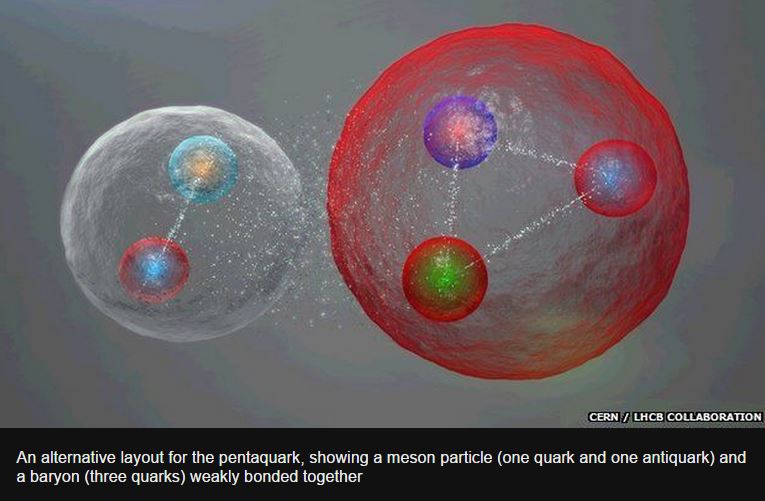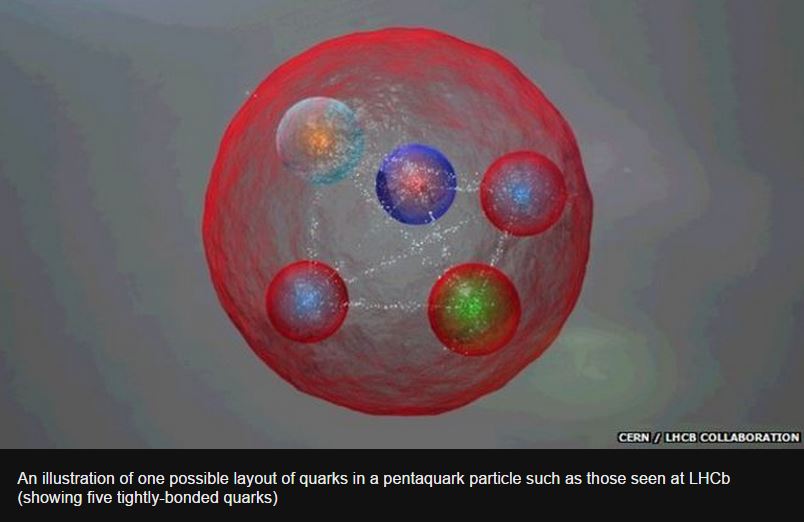Large Hadron Collider Finds “New Form of Matter” Called PENTAQUARK

After being shut down for almost two years, this beast of a machine Large Hadron Collider resumed operation in April this year. Aimed to create scientific history, the Collider has started its latest tenure with a bang. After discovering the Higgs Boson, the scientists at the LHC have announced the discovery of a ‘new form of matter’, (a particle) that was predicted in 1960’s.
From the different states of Quarks, one which particular interested the scientists was Pentaquark. Pentaquark too is a theoretical particle that consists of four quarks and an antiquark. Many experiments were performed but all in vain. But, with the most sophisticated machine on the planet on board, scientists hopes to get the positive results this time.
If you are thinking what purpose do Quarks and Pentaquarks hold for the physicists then read this.
Guy Wilkinson, and LHC spokesperson was as happy as he could be while proudly explaining why the discovery was historical:
Physicists had studied the decay of a subatomic particle Lambda b inside LHCb. They analysed the intermediate states and after examining all the possible factors, concluded the occurrence of pentaquark states.
With the help of the LHC, scientists were able to analyze the data from additional perspectives i.e. they were able to study the decay process in five dimensions.
We have come a long way since the times when atoms were discovered and were considered the smallest particles of the Universe. Now we are looking into the particles that constitute the fundamentals of an atom. Scientists are hopeful that they would solve the Dark Matter Complexity soon.
Source: BBC
Did you find the article informative? For the latest news on Science and Technology subscribe to our website fossBytes
[newsletter_signup_form id=1]







